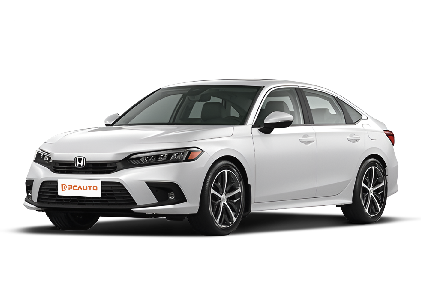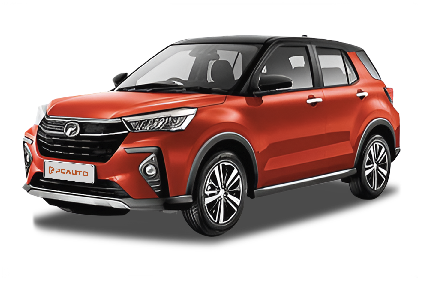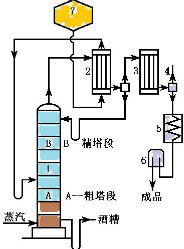Q
What is the fuel consumption of the Mini Countryman 2024?
The fuel consumption of the 2024 Mini Countryman varies depending on the powertrain configuration. According to official data, the average fuel consumption of the fuel - powered models under combined driving conditions is about 6.5 - 7.2 liters per 100 kilometers. The plug - in hybrid (PHEV) version can travel about 50 - 60 kilometers in pure - electric mode, and its combined fuel consumption can be as low as around 2.0 liters per 100 kilometers. The actual fuel consumption is also affected by factors such as driving habits, road conditions, and vehicle load.
For Malaysian consumers, the fuel consumption of the Countryman is relatively economical. Especially, the hybrid version can significantly reduce fuel costs during short - distance urban driving. It's worth mentioning that the Malaysian government currently offers tax incentives for hybrid and electric vehicles, so buying these types of models may be more cost - effective.
It is recommended that potential buyers visit authorized dealers for test drives to personally experience the fuel consumption under different driving modes. At the same time, they can also learn more about the maintenance costs and warranty policies of Mini models, which will all affect the long - term driving experience. In Malaysia's hot and rainy climate, regular maintenance and using engine oil with the appropriate viscosity are also crucial for maintaining the vehicle's optimal fuel consumption.
Special Disclaimer: This content is published by users and does not represent the views or position of PCauto.
Popular Models
Related Q&A
Q
How many gears does a 2020 Hyundai Kona have?
The transmission specs for the 2020 Hyundai Kona in Malaysia depend heavily on the trim and powertrain you pick. The sporty 1.6L turbo petrol variant comes mated to Hyundai's 7-speed dual-clutch transmission (7DCT), while the 2.0L naturally aspirated model sticks with the tried-and-tested 6-speed automatic (6AT). For those who prefer shifting gears themselves, some base trims might still offer a 6-speed manual (6MT) option.
Now, gear count isn't just a number—more ratios can mean smoother acceleration and better fuel economy. The dual-clutch setup here is snappy and efficient, perfect if you like a more engaging drive with quick shifts. On the flip side, the conventional auto in the 2.0L is all about reliability and low-maintenance peace of mind.
Malaysian buyers should really think about their daily grind too. City driving with constant stop-starts demands different transmission behavior than highway cruising, and Hyundai's Smart Drive Mode lets you toggle between Eco, Normal, or Sport settings to adapt—smart for tailoring responsiveness.
It’s worth noting rivals in this segment, like the Honda HR-V or Toyota C-HR, typically use CVTs or 6ATs too, but each brand tunes their transmissions with distinct characteristics. At the end of the day, nothing beats a test drive to feel which one gels best with your driving style.
Q
What kind of warranty does the 2020 Kona have?
The 2020 Hyundai Kona in Malaysia typically comes with a factory warranty of 5 years or 150,000 km, whichever comes first. This covers major mechanical components like the engine and transmission. The battery pack, on the other hand, gets an exclusive 8-year or 160,000 km warranty. It's worth noting that specific terms might vary slightly between dealerships or due to promotional offers, so it's always a good idea to check with an authorized dealer for the latest warranty details before making your purchase.
Important to remember: wear-and-tear items like brake pads and tires usually aren't covered, and neither is damage caused by improper use or failure to follow the maintenance schedule. That's why sticking to regular servicing at authorized service centers is key to keeping your warranty valid. For the electric variant, the Kona Electric, the high-voltage battery system typically has an even longer warranty – standard industry practice to protect the heart of an EV.
Malaysian buyers should also ask about extended warranty options, which some dealers offer as an add-on. It's something to consider based on your individual driving needs and how long you plan to keep the car.
Q
Are there any recalls on the Kona 2020?
Yep, the 2020 Hyundai Kona did have a recall issued in Malaysia and global markets due to some technical hiccups. The main issues were a software glitch in the Electronic Brake Control Unit (HECU) that could lead to longer braking distances, and a potential short-circuit risk in the high-voltage Battery Management System (BMS) – that one was specific to the all-electric version. Hyundai Malaysia has been reaching out to affected owners through their authorized service centers to offer free inspections and repairs.
If you own one, I'd suggest heading to Hyundai Malaysia's recall inquiry page on their website and plugging in your Vehicle Identification Number (VIN) to check if yours is included. Or, just give their customer service hotline a ring – that's probably easier.
Important to note though: car recalls are a standard safety procedure, showing the manufacturer takes responsibility for their products. All recall info in Malaysia is also publicly posted on the Road Transport Department (JPJ) website, so that's another place to check. And don't sleep on those email or SMS notifications from the company – make sure you're regularly checking those too.
If your Kona is on the recall list, don't delay booking that service appointment. It's all about keeping you safe on the road. Hyundai's tech team has already rolled out software updates to fix the HECU issue and beefed up the battery pack's protective measures for the EVs. Once fixed, the cars meet all safety standards, no worries there.
Q
Does the 2020 Kona have engine problems?
The 2020 Hyundai Kona did see some recalls in certain markets due to engine issues, primarily revolving around potential faults in the 2.0L naturally aspirated and 1.6L turbocharged petrol engines. These included concerns that the piston ring design might lead to abnormal oil consumption or even engine damage. However, these problems are typically resolvable through official recall campaigns, which offer free inspections, repairs, or component replacements. Malaysian owners can check if their vehicle is affected by entering their VIN on Hyundai Malaysia's official website.
For Malaysian consumers, regular maintenance and prompt response to recall notices are key to preventing engine troubles. This is especially true in our tropical climate, where keeping an eye on oil condition and cooling system maintenance becomes even more crucial. Hyundai's Smartstream engine technology generally has a solid reliability record. If you're considering a used 2020 Kona, prioritise ones with a complete Hyundai Service Record, and pay extra attention to any unusual noises during cold starts or if the oil warning light illuminates.
In fact, regardless of the brand, turbocharged models in Malaysia's hot and humid environment should have their oil change intervals shortened to 5,000-7,000 kilometers. This simple step goes a long way in extending engine life.
Q
Is the 2020 Kona AWD?
If you're in Malaysia and looking at the 2020 Hyundai Kona, you can actually get it with all-wheel drive (AWD). That version comes packing a 1.6-liter turbo engine mated to a 7-speed dual-clutch gearbox. The AWD system here automatically shuffles torque between the front and rear wheels depending on the road conditions, which is pretty handy for boosting stability on wet roads or when you're carving through corners. It makes sense for Malaysia's rainy weather or those occasional weekend getaways out of the city.
Now, a quick heads-up: AWD models typically guzzle a bit more fuel than their front-wheel drive counterparts, and they'll also cost you a little extra upfront. So, buyers really need to think about how they'll actually use the car to decide if it's worth it. Let's be clear though, the Kona's AWD is more about tackling light urban adventures rather than full-on off-roading. It's perfect for daily commuting with the added bonus of handling some casual weekend trips.
Malaysian shoppers might also want to cross-shop with other AWD offerings in the segment, like the Honda HR-V or Mazda CX-3. But honestly, nothing beats a test drive to feel how each one handles—you'll notice the different tuning styles. And don't forget to check out the warranty terms and service packages from local dealers to make sure the long-term running costs align with what you're expecting.
Q
Does the 2020 Kona have good resale value?
The 2020 Hyundai Kona holds its value pretty decently in Malaysia's used car market, sitting somewhere above average. How well it retains its worth really comes down to the trim level, how well it's been looked after, and what the market's craving. The higher-spec 1.6T turbo models, with their punchier performance, usually fetch more interest – and better resale – than the base variants.
As a compact SUV, the Kona brings some solid firepower to the used scene thanks to its sharp looks, generous kit, and frugal fuel consumption. If you're looking at a Kona under five years old with a clean service history and reasonable mileage, you're generally looking at retaining around 55% to 65% of its original value.
Key things that keep that resale value up? Regular servicing at authorized Hyundai centers, a clean, accident-free title, and any remaining factory warranty. Trust me, hanging onto those complete service receipts is a smart move for when you decide to sell.
Malaysian buyers shopping used should definitely cross-shop against rivals like the Honda HR-V or Toyota C-HR to get a feel for the market, but remember, specs and engine options can vary big time between brands, so compare apples to apples.
If you're thinking about reselling down the line, stick with popular colors like white or silver – they tend to have broader appeal. And skip the wild mods; keeping the car as close to factory spec as possible will make it easier to sell and help maintain that value.
Q
How long will a 2020 Kona last?
The 2020 Hyundai Kona typically has a solid lifespan in Malaysia, usually clocking in at around 150,000 to 200,000 kilometers or over 10 years. Of course, this really hinges on how well the owner maintains it and the driving conditions it's subjected to. Keeping up with regular oil changes, transmission fluid swaps, coolant top-ups, and sticking to the manufacturer's recommended service schedule are absolute musts if you want to keep your Kona running strong for longer.
Malaysia's hot and humid climate can be tough on rubber components and electronics, so it's smart to pay extra attention to wear-and-tear parts like chassis bushings and wiper blades – they tend to deteriorate faster here. For the electric variant, the Kona Electric, you're looking at a battery lifespan of roughly 8 to 10 years, though you can expect some gradual decrease in battery performance over time. Hybrid models generally fare a bit better in the battery department, often lasting beyond 10 years.
Hyundai's warranty coverage in the Malaysian market is pretty comprehensive, which gives owners that extra peace of mind. It's also worth pointing out that long-term reliability has a lot to do with driving habits too – avoiding aggressive driving and overloading the vehicle will definitely help minimize mechanical wear and tear. As the Kona ages, stepping up the maintenance frequency and using genuine parts can go a long way in keeping it in good shape. We'd recommend Malaysian owners make regular trips to authorized service centers for professional check-ups to ensure their Kona stays in tip-top condition.
Q
What is the 2020 Hyundai Kona's horsepower?
The 2020 Hyundai Kona offers two powertrain options in the Malaysian market. The 1.6-liter turbocharged petrol engine variant pumps out 177 horsepower and 265 Nm of torque, paired with a 7-speed dual-clutch transmission—perfect for drivers who crave a bit more zip. On the other hand, the 2.0-liter naturally aspirated engine delivers 149 horsepower and 180 Nm of torque, mated to a 6-speed automatic gearbox, making it a solid choice for everyday commuting.
As Hyundai's compact SUV, the Kona really shines in Malaysia's urban driving scene thanks to its nimble size and sleek styling. It's also packed with Hyundai's SmartSense safety suite, which includes Lane Keeping Assist and Autonomous Emergency Braking—features that add a welcome layer of security behind the wheel.
One thing to keep in mind: powertrain specs can vary slightly from market to market, so it's always a good idea to check with your local dealer for the exact details before making a purchase. Also, sticking to regular maintenance schedules and using the right viscosity oil will go a long way in keeping that engine running strong and maintaining its horsepower output.
Q
Is Subaru Impreza good for tall people?
For taller drivers in Malaysia, the Subaru Impreza is a solid pick. It offers a really good range of seat adjustments – the driver’s seat, in particular, moves plenty in height and fore/aft, so most lanky folks should have no trouble getting comfortable. Headroom’s pretty generous too, so you won’t feel all cramped up. On top of that, the steering wheel telescopes and tilts, making it easy to dial in that perfect driving position.
The Impreza’s got a nice, flat roofline, which means even backseat passengers get decent headroom – a big plus if you’re hauling the family around. Speaking of what Malaysian buyers might care about, beyond just space, seat support and adjustability are key, especially if you’re spending long hours behind the wheel. The Impreza’s seats strike a good balance between holding you in place and keeping you comfy, so road trips won’t leave you feeling beat.
Oh, and let’s not forget the full-time AWD. With Malaysia’s rainy weather, that extra traction translates to better stability – and for taller drivers, anything that boosts confidence behind the wheel while keeping you comfortable is always a win. Comfort and confidence? They go hand in hand, right?
Q
How much should I pay for a 2024 Subaru Impreza?
In Malaysia, pricing for the 2024 Subaru Impreza can vary depending on the trim level and any dealer promotions going on. You're probably looking at around RM130,000 to RM150,000 for the base model, while the higher-spec versions might creep above RM170,000. Best bet is to hit up your local authorized Subaru dealer for the latest quotes and any special deals they might be running.
What really sets the Impreza apart is Subaru's legendary Symmetrical AWD system and that boxer engine. Trust me, these tech bits make a real difference when the roads get slippery or you're tackling those twisty hill routes – perfect for Malaysia's sometimes unpredictable driving conditions. Word on the street is the 2024 model might also get a bump in safety gear, possibly an updated EyeSight driver assistance suite, which is always a plus for peace of mind behind the wheel.
If you're someone who prioritizes a solid driving feel and top-notch safety, the Impreza should definitely be on your shortlist. But hey, it never hurts to shop around. Take it for a spin and compare it head-to-head with segment mainstays like the Toyota Corolla or Honda Civic to see which one best fits your needs and wallet.
Latest Q&A
Q
Is there a recall on 2019 Kia Optima engines?
Regarding the engine recall issue for the 2019 Kia Optima, there's currently no official recall announcement specifically targeting the Malaysian market. However, looking at international records, certain overseas markets did see recalls for the 2019 Optima due to potential engine faults – think issues like bearing wear in Theta II GDI engines, which could potentially lead to stalling or even fire risks. If you're a Malaysian Optima owner, I’d strongly suggest heading to Kia Malaysia’s official website, finding their recall check page, and plugging in your Vehicle Identification Number (VIN) to see if your ride is affected. Or, just swing by your nearest authorized service center for a free inspection – better safe than sorry.
It’s worth noting that Hyundai Motor Group implemented an extended warranty policy worldwide for Theta II engine concerns. For some models, the warranty coverage for engine-related components can be extended up to 15 years or 200,000 kilometers, whichever comes first. That’s a solid demonstration of the brand taking responsibility for its customers.
For Malaysian owners, a proactive step during regular maintenance is to specifically request a check on the engine's condition – keeping an eye on oil loss and any unusual noises is key for preventing potential problems. Also, it’s a good idea to stay updated on any service campaigns announced by local Kia dealers. Sometimes, these campaigns might offer free inspections or repairs for issues that aren’t officially classified as recalls but are still worth addressing.
If your vehicle starts showing symptoms like warning lights flashing, a noticeable drop in power, or excessive oil consumption, don’t delay – contact after-sales service immediately. Catching and addressing issues early can significantly reduce the cost of repairs down the line.
Q
How long will a 2019 Kia last?
The lifespan of a 2019 Kia largely depends on how well you maintain it, your driving habits, and Malaysia's road conditions. If you stick to the manufacturer's recommended maintenance schedule—like changing the oil every 6 months or 10,000 km and checking key components—drive sensibly, and avoid prolonged rough roads, these models typically clock 200,000 to 300,000 km or last over 10 years. Malaysia's hot and humid climate takes a toll on rubber parts (belts, bushings) and batteries, so it's smart to shorten inspection intervals for these and regularly clean the AC system to prevent mold growth. Hyundai-Kia's Theta II and Nu engines are pretty solid tech-wise, and paired with the 6AT transmission, the powertrain reliability holds up well against competitors—just don't skip that transmission fluid change.
Notably, Malaysia's COE system pushes some owners to prioritize long-term care, so I'd recommend using SP/GF-6A spec oil at authorized dealers or certified workshops. On the used market, 2019 Kias with full service records still hold decent resale value. If you're planning to keep it for the long haul, extended warranty might be worth considering. Durability varies a bit between models like the Cerato and Sportage due to their different purposes—SUVs like the Sportage might need more frequent suspension checks.
Q
Are Kia Optimas cheap to fix?
When it comes to the maintenance costs of the Kia Optima in Malaysia, this sedan falls right in the middle of the pack for midsize cars. Parts and labor are definitely easier on the wallet compared to luxury brands, though you might pay a bit more than some heavily localized Japanese models. The Optima's 2.0L and 2.4L naturally aspirated engines are pretty tried-and-true tech – basic services like an oil change with filters will set you back around RM300 to RM500, which lines up with what you'd pay for other cars in its class. Just a heads-up though: if you're looking at the 1.6T turbocharged version, expect those service bills to creep up a notch.
Kia's authorized service center network covers most major cities in Malaysia, so getting your hands on genuine parts is usually straightforward. That said, some non-critical components might need to be ordered in, so it's smart to stick to regular maintenance schedules to avoid bigger repair headaches down the line. If you're in the market for a used Optima, prioritize ones with a complete service history – and maybe look into third-party warranty plans to help cover any unexpected major repairs. All in all, the Optima is more budget-friendly to maintain than its European rivals, but you'll still need to set aside more than you would for a basic econobox. Choosing official or certified repair channels can really help keep those costs in check.
Q
What kind of engine is in the 2019 Kia Optima?
The 2019 Kia Optima hits Malaysian roads with two petrol engine choices: a 2.0-litre naturally aspirated Theta II MPI and a 1.6-litre turbocharged Gamma T-GDI. The 2.0L puts out 152 hp and 192 Nm of torque, perfect for folks who prioritize a smooth, laid-back drive. On the flip side, the 1.6T cranks things up with a meatier 180 hp and 265 Nm, catering to drivers who crave that extra zip when they hit the throttle. Both engines are mated to a 6-speed automatic gearbox, striking a decent balance between fuel efficiency and everyday comfort.
What’s neat about the Optima’s engines is the tech packed in—think direct injection and turbocharging (for the 1.6). These aren’t just buzzwords; they actually help boost power while keeping fuel consumption in check. For Malaysian drivers, both engines should handle our local climate and road conditions like a champ. Kia’s engines have also proven their durability over time, and maintenance costs won’t break the bank. If you’re really hungry for more power, there’s the Optima GT with a 2.0-litre turbo, but keep in mind that trim’s a bit of a rare find in Malaysia.
Q
What is a good year for Kia Optima?
If you're in the Malaysian market for a Kia Optima, the 2016 to 2018 model years come highly recommended. These iterations strike a solid balance between reliability, features, and driving dynamics. The 2016 facelift, in particular, brought a more stylish exterior, a nicer interior feel, and stepped-up safety kit like blind-spot detection and lane-keeping assist. Then, the 2017 and 2018 models refined the powertrain further, delivering an even smoother ride.
On top of that, used Optimas in Malaysia are pretty reasonably priced, and maintenance costs won't break the bank either. They're a solid pick if you're on a budget but still want the comfort of a midsize sedan. A quick heads-up though: when shopping used, always prioritize ones with complete service records. It's also smart to get a proper inspection through official channels to make sure the car's in good shape. Malaysia's hot and humid weather can be tough on a car's electronics and rubber parts, so keeping an eye on the cooling system and seals will definitely help keep it running longer.
View MoreLatest News

2026 Xpeng X9 launched in Malaysia, what are the improvements of the new Xpeng X9?
JohnOct 22, 2025

The brand-new MG4 sold 11,790 units in China within one month of its launch, with a pure electric range of up to 530km.
Kevin WongOct 22, 2025

Chery launched a car that can drive on water, JETOUR Zongheng G700 unveiled
MichaelOct 22, 2025

Toyota Land Cruiser FJ did not disappoint, the most anticipated civilian off-road vehicle is back.
Kevin WongOct 21, 2025

Tesla experiences large-scale battery failures in the Korean market, with owners able to use only 50% of the battery capacity.
Kevin WongOct 21, 2025
View More


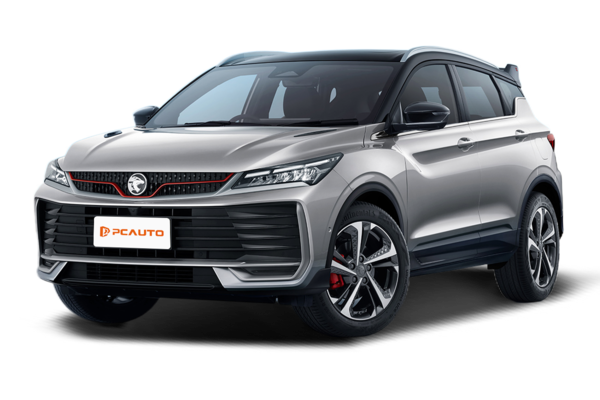
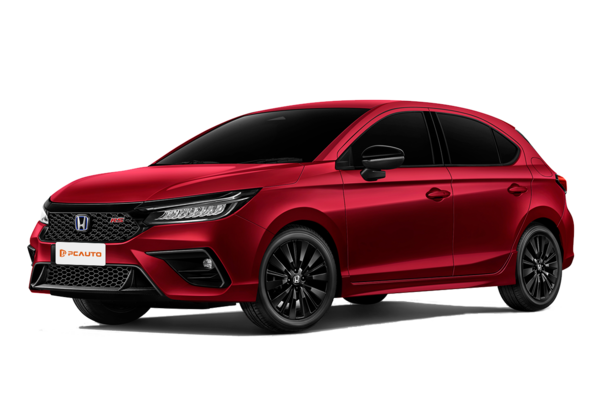
 Cars
Cars